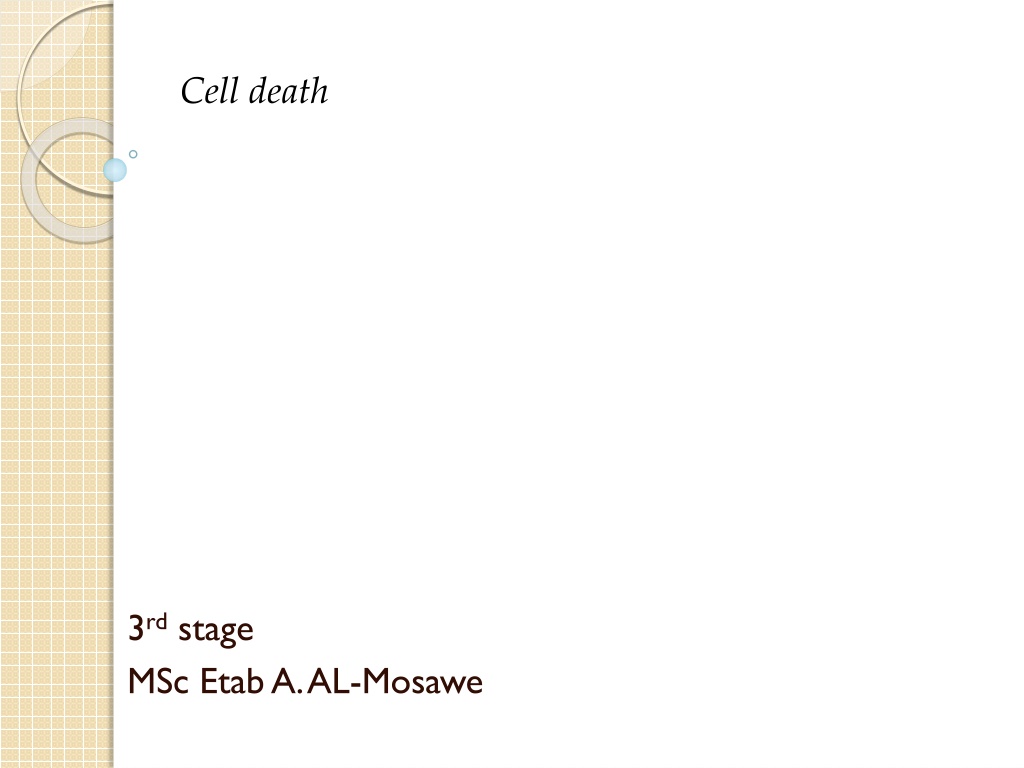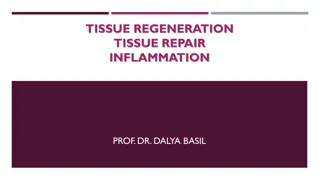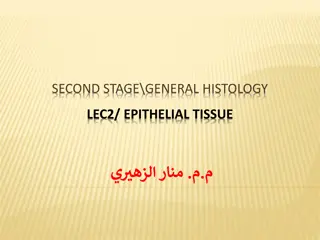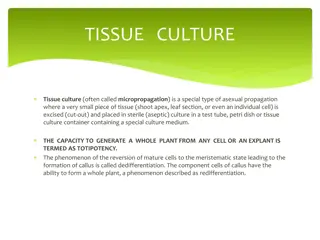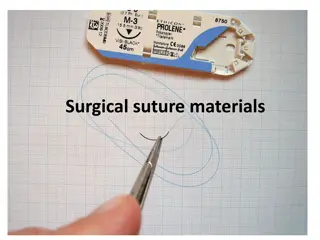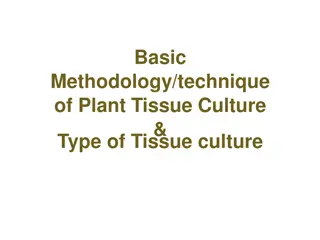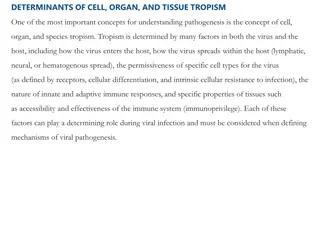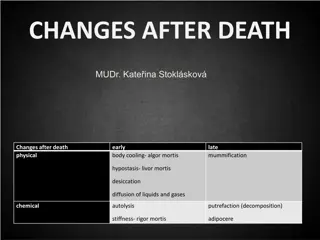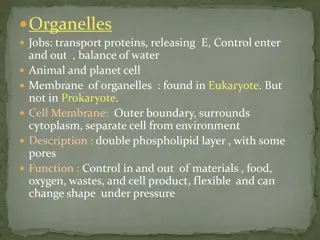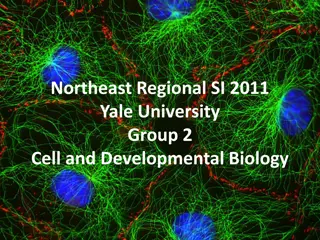Understanding Different Types of Cell Death and Tissue Repair
Cell death can be classified into apoptosis and necrotic cell death, with necrosis further categorized into liquefaction, caseous, and coagulative necrosis. Tissue repair occurs through regeneration or connective tissue replacement.
Download Presentation

Please find below an Image/Link to download the presentation.
The content on the website is provided AS IS for your information and personal use only. It may not be sold, licensed, or shared on other websites without obtaining consent from the author. Download presentation by click this link. If you encounter any issues during the download, it is possible that the publisher has removed the file from their server.
E N D
Presentation Transcript
Cell death 3rdstage MSc EtabA. AL-Mosawe
Cell death Cell death falls into two main categories: Apoptosis and necrotic cell death Types of Cellular Necrosis Liquefaction necrosis Digestive enzymes released by necrotic cells soften and liquefy dead tissue. Occurs in tissues, such as the brain, that are rich in hydrolytic enzymes. 1. Caseous necrosis Dead tissue takes on a crumbly, cheeselike appearance. Dead cells disintegrate but their debris is not fully digested by hydrolytic enzymes. Occurs in conditions like tuberculosis where there is prolonged inflammation and immune activity. 2. Coagulative necrosis Dead tissues appear firm, gray and slightly swollen. Often occurs when cell death results from ischemia and hypoxia. The acidosis that accompanies ischemia denatures cellular proteins and hydrolytic enzymes. Seen with myocardial infarction, for example. 3.
Types of tissue repair 1. Repair by regeneration 2. Repair by connective tissue replacement
25-Kidney with coagulative necrosis: Tissue structure and cell out line are preserved. Nuclei are pyknotic but are still visible.
26-Lung with caseous necrosis: At the upper right is amorphous pink caseous material composed of the necrotic elements of the granuloma as well as the infectious organisms. This area is ringed by the inflammatory component with epithelioid cells, lymphocytes, and fibroblasts.
27- Lung with liquefactive necrosis: Seen here are two lung abscesses, one in the upper lobe and one in the lower lobe of this left lung. An abscess is a complication of severe pneumonia, most typically from virulent organisms such as S. aureus. Abscesses are complications of aspiration, where they appear more frequently in the right posterior lung.
This is a cerebral abscess. There is a liquefactive center with yellow pus surrounded by a thin wall. Abscesses usually result from hematogenous spread of bacterial infection, but may also occur from direct penetrating trauma or extension from adjacent infection in sinuses.
This trichrome stain demonstrates the light blue connective tissue in the wall of an organizing cerebral abscess. Normal brain is at the right and the center of the abscess at the left.
Adipost tissue with fat necrosis: especially Na, K, Ca. soap is formed within adipocytes. adipocytes are replaced by opaque, homogenous substance.Stains pink with K soap.Nuclei F.A. binds with Metallic ions are pyknotic.
Zenkers Necrosis: coagulation of the protein of the sarcoplasm of striated muscle
